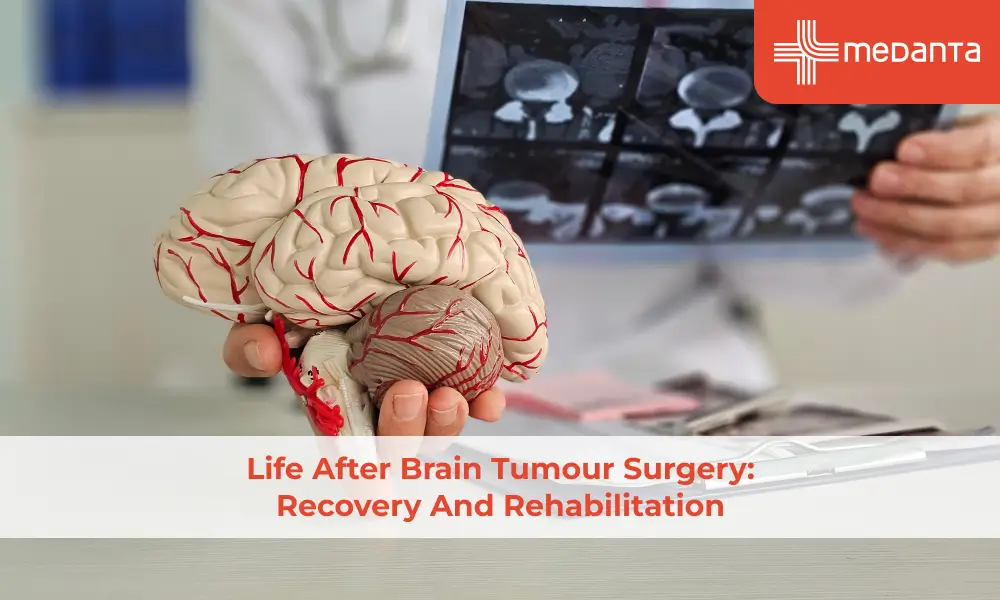What is an Intracerebral Haemorrhage?

Intracerebral haemorrhage (ICH), also known as haemorrhagic stroke, is an emergency situation caused due to sudden bursting of blood into brain tissue. Such bleeding is deadly as it can quickly damage your brain.
The blood vessels are responsible for carrying blood to and from the brain. Abnormal pressure or trauma can lead to rupturing of arteries or veins, releasing blood into the brain tissue. Thus, the brain tissue can be damaged by the blood itself. It is one of the most common causes of stroke. A stroke is caused when the brain is deprived of a supply of oxygen and blood.
What are its causes?
The most common cause of ICH is hypertension or high blood pressure which can weaken the blood vessels in the brain and make them leak and rupture. Other causes of ICH are given below -
- Head trauma or head injury. Any fracture to the skull or penetrating wounds, as in the case of a gunshot, may damage an artery and result in bleeding.
- Rupture in cerebral aneurysm which can be caused by a weakness in a blood vessel in the brain that fills with blood and bursts resulting in life-threatening bleeding.
- Arteriovenous malformation (AVM) which is an abnormal tangling up of blood vessels in the brain causing disruption in the normal flow of blood.
- Bleeding tumours - Highly vascular tumours like Metastatic and Angiomas tumours may bleed into the brain tissue.
- Cerebral amyloid angiopathy (CAA) where proteins called amyloid build-up on artery walls in the brain. This causes bleeding into the brain.
- Liver disease can increase the risk.
- Use of blood thinners - Drugs like coumadin, warfarin, and heparin can cause ICH.
- Severe hypertension caused due to use of cocaine or methamphetamine.
- Bleeding disorders, as seen in the case of sickle cell anemia, DIC, thrombocytopenia, or haemophilia where the blood fails to clot normally and excessive bleeding occur.
Anyone can be attacked by ICH. However, the risk heightens with increasing age. It is more commonly found in people after 55 years of age. Men slightly have a higher risk as compared to women.
What are the symptoms of ICH?
There can be sudden onset of symptoms like that of ischemic stroke. ICH can also occur by a smooth progressive onset of symptoms. The symptoms vary according to the location of haemorrhage. The various types of symptoms of ICH include -
- Sudden weakness or numbness in your face or paralysis of any one side of your body.
- Sudden loss of vision.
- Severe headache.
- Nausea and vomiting.
- Lack of balance and coordination causing dizziness, lethargy and sleepiness.
- Problems in reading, speaking, writing, and understanding.
- Alterations felt in the levels of consciousness.
- Confusion.
- Seizures.
ICH is a deadly medical condition. If you experience such symptoms or find anyone suffering from these symptoms, make sure that you immediately call 911.
When and how to seek treatment and diagnosis?
Haemorrhages usually enlarge within three hours, as seen in 33% of cases. This is dangerous because the bigger the volume of haemorrhage, the worse the outcome will be. So, you must seek care and medical treatment immediately during the occurrence of any neurological symptoms.
For testing and diagnosis, a Computer Tomography (CT) scan of the brain is recommended. Once the patient gets stabilized, CT or magnetic resonance (MR) angiogram can be used for diagnosis.
Delayed deterioration may be experienced by some patients due to several issues like seizures, swelling, re-bleeding, and hydrocephalus.
Treatment
Treatment is done to stop the bleeding, remove the clot and give relief to the pressure on the brain. Treatment can be either surgical or non-surgical.
Surgical Treatments
Which patients are suitable for surgical treatments?
- Patients with a haemorrhage location that is favourable for surgery. This may be in the lobar, external capsule, cerebellar and dominant hemisphere.
- Patients suffering from issues like re-bleeding, necrosis, oedema, etc can go for surgery. However, lowering such issues by surgery rarely results in absolute neurologic improvement.
- Patients less than the age of 50 can endure surgery better than a patient of higher age.
What are the various ways of surgical treatments?
- To evacuate a clot in the brain, minimally invasive treatment is stereotactic clot aspiration with the use of neuronavigational technology. This technique works similarly like GPS in cars.
- If the clot is close to the brain's surface or if the clot is connected with an underlying brain lesion, a craniotomy is recommended. A craniotomy is a technique that removes a piece of skull bone and exposes the brain to stop the clot.
Non-surgical Treatments
Which patients are suitable for non-surgical treatments?
- Patients with minimal symptoms.
- Patients with a haemorrhage location like thalamic haemorrhage and basal ganglia.
- Patients with a minimal probability of a favourable outcome. Such cases may include poor neurological condition, bleeding disorder, large haemorrhage, advanced age, etc.
What are the various ways of non-surgical treatments?
- If the patient has been on blood thinners, clotting factor administration is recommended.
- Measuring and controlling pressure caused by a clot in brain tissue.
- Controlling blood pressure and reducing the risk of further bleeding.
The bottom line
You can reduce your chances of being affected by ICH by avoiding smoking, treating high blood pressure, treating heart disease, controlling the level of diabetes, and maintaining a healthy lifestyle. Once affected by ICH, some patients take several months or years to get recovery. Health is the greatest gift. So, try to be health-conscious and take care of yourself.






